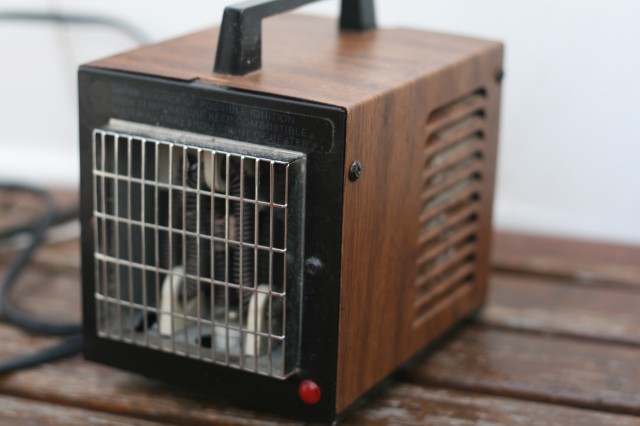
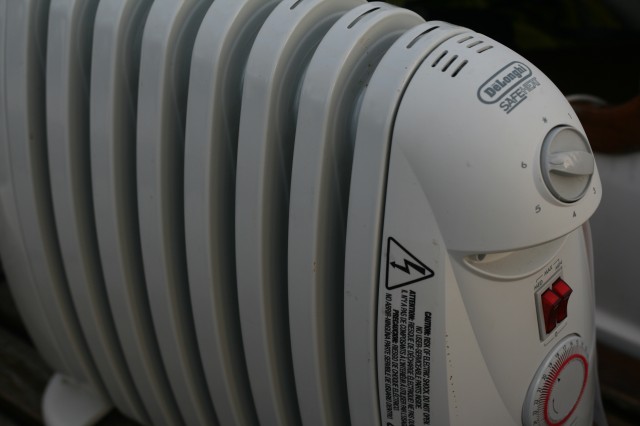
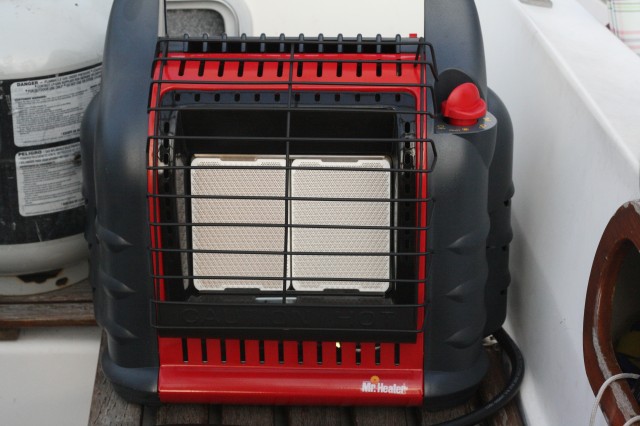
One of the frequently asked question we get is, “How do you heat your boat in the winter?” The short answer is that we heat with three different sources, use a dehumidifier and try to manage the power supply like a three-ring circus.
In a perfect world, we would install an Espar system, which is a diesel version of “central heat” for landlubbers. This system is elegant, well suited for our fore-and-aft-cabin setup, and helps to combat condensation, but the cost was prohibitive (although you can sometimes find a unit on Ebay). Another option is to install a diesel cabin heater such as the Dickinson Marine, but I felt that would not address our two cabins adequately. The main cabin would get nice and toasty, but the aft cabin might as well be in Siberia. Tig didn’t want to remuddle our simple little boat with a main cabin heater and jury-rigged heating in the aft cabin.
If we were planning on staying in the Northeast for several years, we could justify the cost of an Espar system–the marina charges high commercial electricity rates during the winter, and our electrical use is metered–but our goal is to avoid another cold winter on this boat! So we opted for a three ring circus approach.
Introducing our performers
We have one 30 amp power cord coming into our boat from the marina hook up and one AC outlet. For safety reasons, Tig only wants that outlet to handle 15 amps max which is about 1650 watts. We are a big fan of the go small, go simple, go now philosophy, so we are trying to avoid upgrading our AC panel. Tig, who is the electrical engineer on the boat, and has done all the research on the heating situation may override me on this, but for now we will use what we have.
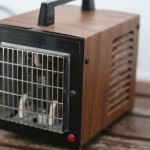 Our boat came with a small Brookstone electric heater with fan that draws 1300 watts on low and 1500 watts on high. It has been a workhorse, plugging away day in day out to keep us warm. It also helps to circulate the air. However, it is such a power suck that we use it alone. The dehumidifier and other heat sources are turned off when this little guy is in use. Because it can be a fire hazard, we turn it off when we leave the boat.
Our boat came with a small Brookstone electric heater with fan that draws 1300 watts on low and 1500 watts on high. It has been a workhorse, plugging away day in day out to keep us warm. It also helps to circulate the air. However, it is such a power suck that we use it alone. The dehumidifier and other heat sources are turned off when this little guy is in use. Because it can be a fire hazard, we turn it off when we leave the boat.
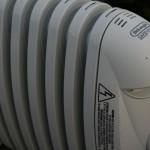 We bought this little DeLonghi oiled-filled heater for the times when we have to leave the boat. It provides a lower amount of even heat and is much less of a fire hazard. It is also much safer for the kiddos; they are less likely to get a nasty burn from it. However, it doesn’t keep us as warm as a blast of hot air. This heater draws 500 watts on low setting, 700 watts on medium and 1500 watts on high setting.
We bought this little DeLonghi oiled-filled heater for the times when we have to leave the boat. It provides a lower amount of even heat and is much less of a fire hazard. It is also much safer for the kiddos; they are less likely to get a nasty burn from it. However, it doesn’t keep us as warm as a blast of hot air. This heater draws 500 watts on low setting, 700 watts on medium and 1500 watts on high setting.
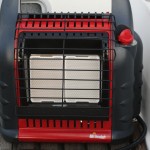 Our boat came with an Origo alcohol stove, but we opted not to use it because we didn’t want to keep yet another fuel source on our boat. Diesel and propane are all we want to deal with. So we bought this Mr. Heater propane unit. It is like a fireplace, giving off big heat. The downside is that propane is a highly explosive fuel source, and the unit burns hot, so we only use it after the kiddos go to sleep, and we turn it off before we go to bed.
Our boat came with an Origo alcohol stove, but we opted not to use it because we didn’t want to keep yet another fuel source on our boat. Diesel and propane are all we want to deal with. So we bought this Mr. Heater propane unit. It is like a fireplace, giving off big heat. The downside is that propane is a highly explosive fuel source, and the unit burns hot, so we only use it after the kiddos go to sleep, and we turn it off before we go to bed.
In our head is a big dehumidifier that we took from the basement of our house to combat condensation, the bane of boat life. The dehumidifier draws 535 watts and has been a tremendous help in keeping our boat dry.
Juggling the power supply
We haven’t quite worked out our system yet, but we often run the dehumidifier during the day and try to avoid using the heaters as long as the sun is out. With the shrinkwrap on, we often get a nice greenhouse effect going. I can run the dehumidifier with the DeLonghi heater on low setting or I can run the Brookstone heater by itself.
Is that confusing? I think so, too! But I keep telling myself that come spring, we’ll toss all but one unit and sail for warmer ports where condensation and heating is all but a distant memory.

I’ve never been impressed with the design of dehumidifiers. They’re apparently nothing more than hyper-active AC units with weak fans that drain water into a bucket. To wit, as cold as it is already outside, perhaps you can coil up some copper tubing and use the great outdoors as the heat sink for your condenser coil and integrate it into one of the shrink wrap walls.
Thoughts?
Wow, I’m going to let the resident engineer figure that out. If you can develop a system for liveaboards, you could have a great side business as we are all in Condensation Central here!